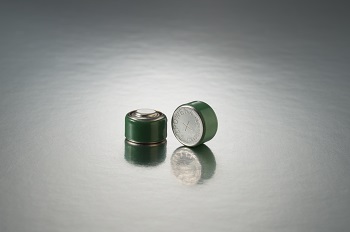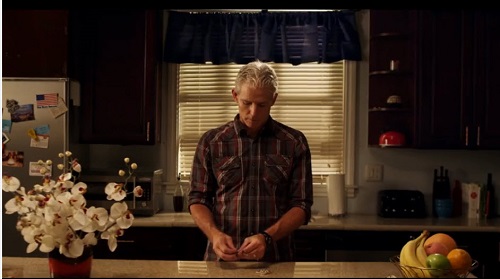ZPower Rechargeable Batteries: Less is More
Carolyn Smaka: It is great to have you with us today. Why don’t we start with an overview of ZPower?

Ross Dueber: Thanks Carolyn. ZPower is a leading developer and manufacturer of rechargeable silver zinc battery technology. We are located in Southern California. We are focused on markets for small batteries and microbatteries for our technology. Silver zinc is a high-energy rechargeable battery technology that has been used in military and aerospace applications for quite some time. ZPower has shrunk that battery down for applications that are more suited for things like hearing aids, wearable computing, and medical devices.
ZPower’s technology is a great rechargeable solution for small mobile electronic devices.
Carolyn: I would think the hearing aid market is relatively small when compared to other electronics markets. Why did ZPower decide to get into the hearing industry space?
Ross: One of the primary reasons is that the major hearing aid manufacturers came to us several years ago as they looked for a high energy, rechargeable battery that would enable the market to shift from disposable batteries to rechargeable batteries. Our chemistry and our technology is a key enabler for that to happen. They were dissatisfied with the available rechargeable solutions at that time, primarily because of limitations with the energy content of the batteries. So we started working with the major hearing aid manufacturers to develop this technology and customize it specifically for hearing aids.
Carolyn: And the first system launched is the VFusion rechargeable system?
Ross: Yes, we recently launched our product into the market about six months ago with Starkey Hearing Technologies VFusion rechargeable systems.
Carolyn: I think your new commercial tells your story in a simple and humorous manner - readers can click on the image below to launch the video in YouTube. But I’d also like to ask you to review the value proposition - what are the benefits of rechargeable batteries and rechargeable solutions in hearing aids?
Ross: The value proposition is pretty compelling for the hearing aid market. It is one of the last markets in mobile electronics, particularly advanced portable electronic devices, still using disposable batteries. ZPower technology will enable hearing aids to join the rest of the mobile electronic revolution in terms of moving to rechargeables.
As we take a look at the benefits of rechargeable technology today, we are very well aware of what it means for our smart phones and laptop computers, for example. Rechargeable technology enables us to work throughout the day without being connected to a wall socket. Just imagine what our lives would be like now if we had to go back to replacing our batteries, maybe AA or AAA batteries, on our smart phones on a regular basis. As we look at the hearing aid market, the status quo needs to shift. Although existing hearing aid wearers may be used to changing batteries on a regular basis, the next generation of hearing aid wearers coming up is not accustomed to that practice. They expect rechargeable technology. The shift is inevitable and we are driving the innovation to help make that shift happen.
There are benefits in three key areas – better performance, better for patients and professionals, and better for the planet.
In terms of performance, ZPower gives wearers the continuous use of their hearing aids throughout the day. Rather than taking the hearing aid off at night and opening the battery door or replacing the battery, ultimately we are moving to a solution where you will simply take your hearing aid off and put it into a charger. Development is in the works to eventually make such a model the industry standard.
As you know, there is wireless revolution occurring in hearing aids, that includes wireless connectivity between aids, and wireless connectivity to other devices such as smart phones, music players, televisions, etc. Wireless streaming puts a greater demand on the batteries. Traditionally, patients were replacing disposable batteries every one to two weeks. Now if they are taking advantage of wireless streaming, they may be replacing them in less than one week.
It’s interesting to note that the growth of disposable hearing aid batteries in terms of usage is twice the rate of the growth in hearing aid sales. Clearly, we are using more and more batteries in our hearing aids today and that is only going to continue to grow as additional functionality is being built into hearing aids.
Rechargeable technology gives wearers the assurance of all day operation so that they do not have worry about changing batteries at an inopportune time. You charge it at night just like you charge your smart phone. There is no longer a need to run out and buy batteries on a regular basis or carry spare batteries. All the little accessories that have been developed over the years to accommodate battery changing really go away. There is no more counseling patients on pulling the tab off and waiting one minute for the battery to activate, or to listen for beeps in their hearing aids.
In our field trials, patients told us that the number one value proposition was the assurance that the battery was not going to die at an inopportune time. They would not have to fumble for a replacement in a meeting or excuse themselves to go change a battery at a theater.

Starkey Hearing Technologies VFusion Rechargeable System.
Carolyn: When I was dispensing analog hearing aids many years ago, I remember looking at spec sheets and telling my patients that their batteries would last about 30 days. Those days are gone.
Ross: Battery sales are increasing at about 7-8% per year versus hearing aid sales increasing at 3-4% per year. That is twice the rate and why is that? Because again it is that we are using batteries at a much faster clip due to advancements in hearing aids. That is only going to continue to be the case as you look at additional capability in hearing aids. We went from analog to digital, now digital to wireless, then wireless to wireless streaming, and the power demands of wireless streaming are much greater. Battery technology has improved as well, but we are limited by the fundamental laws of nature. It’s not like an engineering solution is going to come along and give us a 10x better battery; there are no clever work-arounds when it comes to energy content. Hearing aid technology also becomes more efficient with newer solutions, but this Made for iPhone trend is going to continue, making disposable batteries an unsustainable solution for the long term.
Carolyn: You also mentioned benefits of rechargeable batteries for professionals. Can you expand on that?
Ross: Yes, professionals will have more satisfied patients. Offering rechargeable solutions will give you a competitive differentiation from what maybe exists today. We do not necessarily see rechargeable batteries as a retail purchase for consumers, but rather something that will be delivered via the professional channel and the manufacturers themselves. It puts audiologists at the leading edge of new technology and attracts patients to their offices who may want to upgrade their technology to the latest and greatest.
Up until this point, professionals have really only looked at rechargeable solutions for specific patients, such as those who are older and do not have the dexterity to change batteries on a regular basis. They think that’s where rechargeable technology should fit. We are saying that rechargeable technology should be the norm. At least initially, we are working on compatibility with disposables so that the solutions we provide enable you to have the best of both worlds so to speak. We recognize that there is certainly a place for zinc air technology today and we do not want the market to quit cold turkey. Looking to the future, however, we have to change the thinking of professionals to understand the benefits of a new standard that is rechargeable technology versus disposables.
Carolyn: What are the benefits for the planet?
Ross: In terms of the environment, we do not generally think of batteries as adding significant waste to the environment, but when you do the numbers it is pretty compelling. We are estimating right now that about 1.4 billion disposable hearing aid batteries go into landfills each year. That is every year. When we do the calculations for the packaging and the weight of those batteries, that is over 3 million pounds of waste annually that goes into landfills. Hearing aid batteries are not recycled. We are simply throwing them into the waste stream. Based on the growth rate of hearing aid battery sales, the number is doubling every 9 years. So in 9 years, that 3 million pounds will grow to 6 million pounds of waste. That is simply not acceptable in this day and age.

ZPower rechargeable batteries.
With ZPower, you will optimally use one battery per aid per year, which will significantly cut down on the waste. Additionally, we will recycle our batteries to recover and reuse the material, and to prevent any batteries going into the waste stream. That is a significant transition from the paradigm today of disposability to rechargeability and recyclability.
Carolyn: Can we expect a rechargeable solution in all sizes of hearing aids? Even with micro CICs?
Ross: Currently, Starkey offers sizes 312 and 13 with VFusion. We certainly have the capability here to manufacturer size 10 and 675 if manufacturers want them. That is where customization comes in for each individual manufacturer. Ultimately, we see the market as moving towards more customized batteries; as we look to replace backward compatibility with zinc air, we will move towards custom sizes for each manufacturer or even customized sizes for individual product designs such as CICs.
Carolyn: You said that you are working with manufacturers to develop integrated charging solutions. Tell me more about that.
Ross: Each manufacturer has a different set of requirements based on their technology development. We initially launched this with Starkey, but we are also in field tests with other manufacturers on how they would like to implement their rechargeable solution. There will be some differentiation between each individual manufacturer as we go forward in how they will begin to roll these out. They see the benefits of rechargeable technology, what it brings to them as well as what it brings to the market in general. Rechargeability will be particularly important moving forward, to handle the power demands of advanced wireless technology. Zinc air technology is a great technology for a disposable battery. It has done extremely well in terms in what it has enabled within hearing aids up to this point, but we are now at a crossroads where it makes sense to move to rechargeable technology as the standard.
In addition to developing the batteries, we are also developing a suite of electronic solutions that will enable the manufacturers to more easily implement and migrate from disposable designs in their hearing aids to rechargeable designs. We have developed some integrated circuitry and are working with leading providers in that area so that we can assist in the migration of their product designs going forward.
Carolyn: What about existing hearing aids? Would there be any options for people who already have hearing aids to move to a rechargeable solution?
Ross: Yes, we are developing some solutions for retrofitting existing hearing aids. We have a great technology that has plenty of runway for improvement as the market continues to evolve as well.
Carolyn: Will you be developing rechargeable cochlear implant (CI) solutions as well?
Ross: Yes. We have done some testing and development with the CI community and it is certainly the case that it will be a viable technology going forward. As I look at the CI market, it also involves developing an additional suite of electronics and solutions to support our battery and the adoption of the technology for CI companies.
Carolyn: Are you looking at other markets besides hearing aids?
Ross: Yes, we are excited about the growing trend in wearable computing, and in the segment that has been dubbed with the name “Hearables.” The miniaturization of hearing aids has caught the attention of companies that are looking to use the ear now as a focal point for biometric sensor technology. There is a lot happening right around the ear in new product development and innovation that is going to need small rechargeable battery technology. We are reaching out to companies on the cutting edge of that trend. At the other end of the spectrum, the need for rechargeable battery technology is growing in areas like transportation and electric vehicles, but our sweet spot is in the small stuff.
Carolyn: Can professionals have an impact on the availability of new solutions? Or do we just sit back and wait?
Ross: Hearing care professionals can absolutely have an impact on bringing solutions to market. Professionals should ask their manufacturers for solutions with ZPower batteries. Hearing care professionals can play a significant part in advancing technology forward. They should not just wait for solutions to become available, but they can help create a pull to bring the technology into the market.
Carolyn: Ross, what is your background and how did you come to ZPower?
Ross: I am a retired officer from the Air Force, and have been working with batteries for most of my career. When I graduated from the Air Force Academy, my first assignment was working on specialty batteries for aerospace and satellite applications. After retirement I joined a great company, Emerson Electric, working on innovation and technology issues including batteries. I eventually came to ZPower to commercialize silver-zinc technology into various applications including mobile electronics.
We continue to see a general decline in disposable batteries across the board with all applications, with replacement by rechargeables. We’re very excited to bring ZPower to the hearing aid market to power the future of hearing technology.
Carolyn: Thank you. It’s been great speaking with you and I look forward to an update as the technology develops.
For more information, please visit zpowerbattery.com or the ZPower Expo Page on AudiologyOnline.



